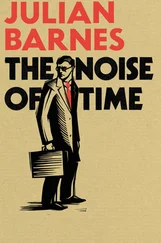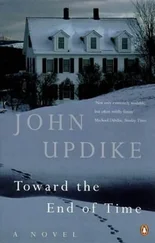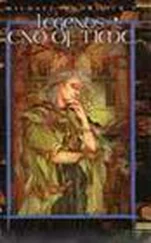DOWKER. That presupposes that there will be a future in which we can try new experiments that test the theory and find that these experiments may be in contradiction to our predictions. The very word ‘prediction’, which I have used so many times in this letter, is laden with time-meaning. A prediction is a statement of expectation of something that will happen. Prediction is the lifeblood of science. How could we do science without it?
BARBOUR. I totally agree about the importance of prediction. But it does not necessarily have to involve time in the way you suggest. From observations of one side of the Moon, astronomers tried to predict what was on the other side. They got it wrong when the other side was seen. I do not think time comes into such predictions at all significantly. Consider, as Jim Hartle once did when he was quite close to my present position, geology. The rocks of the Earth hardly change. Suppose the idea of continental drift had been proposed before America had been discovered. It would have predicted the existence of America and the geology of its east coast (the west of Ireland exactly matches Newfoundland, I believe). Again, time is not essentially involved in this prediction. I think Bell puts my case very well: ‘We have no access to the past. We have only our “memories” and “records”. But these memories and records are in fact present phenomena.’ The italics are Bell’s. Predictions are always verified in the present. That is my apologia.
Notes Added for This Printing
As mentioned at the end of the Preface and at various places in the Notes, there have been some promising developments of the ideas presented in this book since it was sent to press in spring 1999. They are contained in two joint papers published electronically and available on the web: Julian Barbour and Niall Ó Murchadha, ‘Classical and quantum gravity on conformal superspace’, http//xxx.lanl.gov/abs/gr-qc/9911071 and Julian Barbour, Brendan Z. Foster, and Niall Ó Murchadha, ‘Relativity without relativity’, http//xxx.lanl.gov/abs/gr-qc/0012089 [the xxx is correct].
The potential significance of the first paper has already been explained on p. 349/350. At this stage, I do not wish to make any firm statements about this new work since it is incomplete and has not yet been exposed to scrutiny by other physicists, but I can at least give some idea of what is at stake. The basic issue is the status of the relativity principle. When Einstein and Minkowski created special relativity, they deliberately made no attempt to explain the remarkable structure that their work had brought to light: the existence of spacetime and its associated light cone, both being reflected in the Lorentz invariance of the laws of nature. They adopted Lorentz invariance, which assumes the existence of length, as the basis of physics. In small regions of spacetime, this still remains true in general relativity.
Taken together the two papers cited above suggest that all of the presently known facts of relativity and electromagnetism can be derived in a new and hitherto unsuspected manner from three assumptions: 1) an independent time plays no role in dynamics; 2) best matching (pp. 116/7) is the essential element in the action principle of the universe; 3) any theory satisfying these principles must have nontrivial solutions. It is the third assumption that makes a dramatic difference. Hitherto, in common with other colleagues, I had assumed (see p. 181) many different theories could satisfy the first two conditions, but, as my collaborator Niall Ó Murchadha discovered, this is not the case. The reasons for this and its remarkable potential consequences are spelled out in the second cited paper. It is frustrating not to be able to say more at the present moment, but at a time of uncertainty about the final outcome it is better to say less rather than too much. My website (julianbarbour.com) will carry more detailed information.
I conclude with some additional comments that have mostly already appeared in the UK paperback.
My website now carries an email dialogue between myself and Don Page (whom Hawking, in A Brief History of Time , credits with pointing out, with Raymond Laflamme, ‘his greatest blunder’). I think Don has made some interesting and valuable comments, including both valid criticism of some points but also reassurance on other issues on which I had doubts. Don is another person who takes the timelessness of physics utterly seriously, and, in fact, our views are very close. He has written several papers on the problem of consciousness and quantum mechanics (Sensible Quantum Mechanics). Full details can be found on my website. I should also like to mention here an idea that Dieter Zeh put forward in the meeting at Huelva in Spain at which I conducted my straw poll. This is that the universe must, of necessity, always be observed as expanding. I find this an intriguing idea and, if it is correct, it would fit beautifully with the open-ended, flowerlike structure of Platonia. I think Dieter’s idea, which I hope is correct though I have hedged my bets in this book, influenced me somewhat in the writing of Box 3 and parts of the Epilogue.
I regret that in the final chapter I made no mention of the idea of inflation, which is explained in a gripping and candid book by Alan Guth that I have at least now included in the books recommended for further reading. From reading Guth’s book I also learned that an interesting proposal of a mechanism for the ‘creation of the universe’ was made by Edward Tryon in 1973. I should also have mentioned that in 1982 Alexander Vilenkin proposed an influential alternative proposal to Hawking’s no-boundary idea (1981) and that Jim Hartle played a significant role in its development, which culminated the Hartle-Hawking wave function. My apologies to these authors (none of whom have registered any complaint). Details can be found in Guth’s book.
It has also been pointed out to me by several email correspondents that there is a clear anticipation of some of my ideas about time in Fred Hoyle’s novel October the First Is Too Late , which Paul Davies discusses in his About Time . Sir Fred’s ‘pigeonholes’ are essentially my time capsules. American reviewers and correspondents also noted a similarity with the philosophy of time that underlies Kurt Vonnegut’s Slaughterhouse Five. Having now read the book, I can confirm that this is the case. Of course, as I make clear in the text, John Bell also formulated the idea of time capsules (without giving them any name) quite clearly long before me. Another correspondent, Andrew Clifton, regretted that I had not devoted at least a few words to demolishing the idea that there really is a ‘moving present’. I think he was right. Happily, David Deutsch has done the job very well in his The Fabric of Reality .
I should also like to thank Damien Broderick, who has reviewed my book for The Australian, for drawing my attention to various misprints.
It is also now clear to me that in the body of the text I should have said more about possible ways in which my ideas could be refuted. A theory is no use to science unless it is capable of disproof. In the email exchange with Fay Dowker, I did mention the possibility of mathematical disproof of my conjecture that the Wheeler—DeWitt equation concentrates its solutions on time capsules. However, I think that (in normal parlance) that might take decades. Something that might occur much sooner is a completely convincing definitive form of superstring theory (or some other unified theory) that reintroduces an external time (string theory does currently use background structures). That would kill my idea. My own feeling is that in fact superstring theory will, if and when it is found, turn out to be timeless.
Читать дальше












